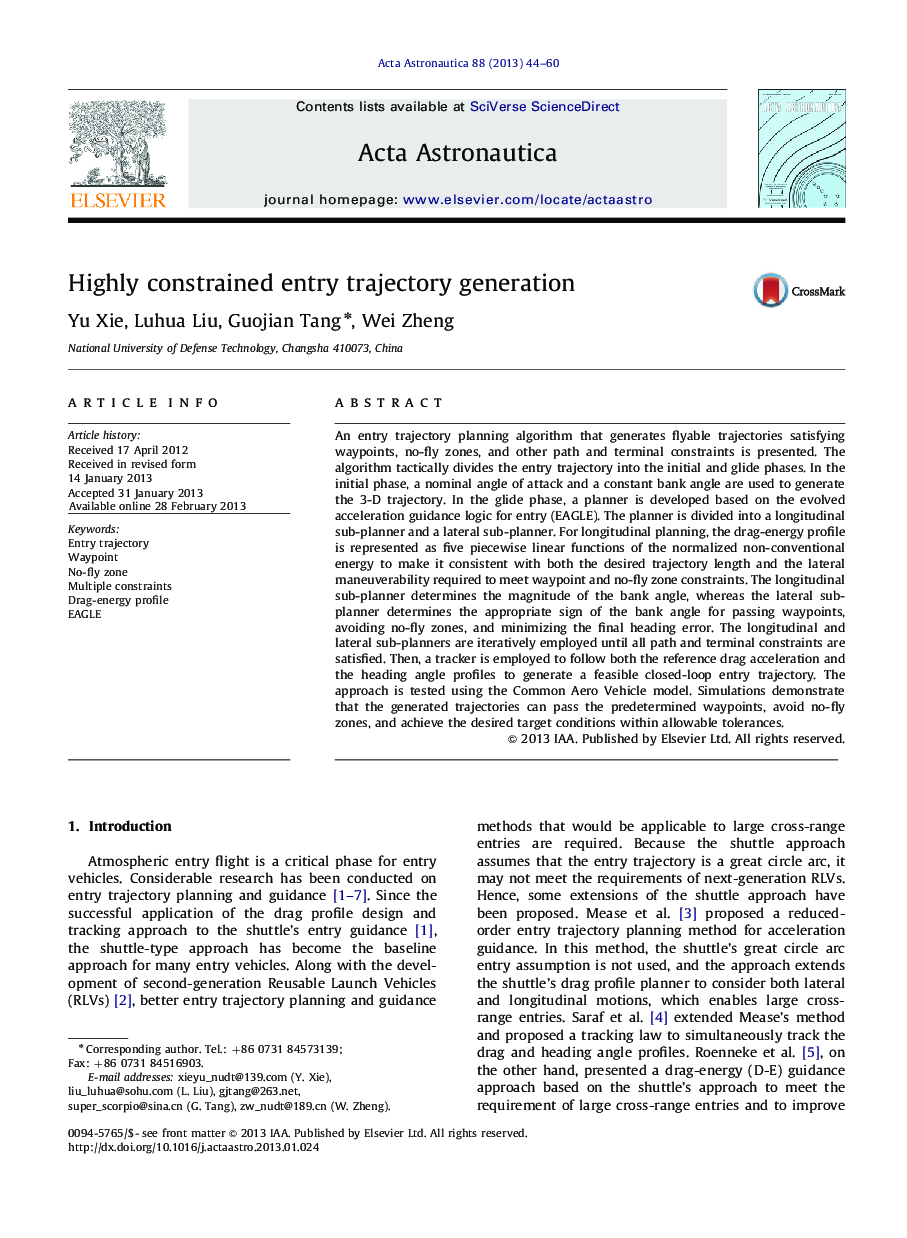| Article ID | Journal | Published Year | Pages | File Type |
|---|---|---|---|---|
| 1714987 | Acta Astronautica | 2013 | 17 Pages |
An entry trajectory planning algorithm that generates flyable trajectories satisfying waypoints, no-fly zones, and other path and terminal constraints is presented. The algorithm tactically divides the entry trajectory into the initial and glide phases. In the initial phase, a nominal angle of attack and a constant bank angle are used to generate the 3-D trajectory. In the glide phase, a planner is developed based on the evolved acceleration guidance logic for entry (EAGLE). The planner is divided into a longitudinal sub-planner and a lateral sub-planner. For longitudinal planning, the drag-energy profile is represented as five piecewise linear functions of the normalized non-conventional energy to make it consistent with both the desired trajectory length and the lateral maneuverability required to meet waypoint and no-fly zone constraints. The longitudinal sub-planner determines the magnitude of the bank angle, whereas the lateral sub-planner determines the appropriate sign of the bank angle for passing waypoints, avoiding no-fly zones, and minimizing the final heading error. The longitudinal and lateral sub-planners are iteratively employed until all path and terminal constraints are satisfied. Then, a tracker is employed to follow both the reference drag acceleration and the heading angle profiles to generate a feasible closed-loop entry trajectory. The approach is tested using the Common Aero Vehicle model. Simulations demonstrate that the generated trajectories can pass the predetermined waypoints, avoid no-fly zones, and achieve the desired target conditions within allowable tolerances.
► A redefined coordinate frame is used to simplify the trajectory planning algorithm. ► Drag profile that is consistent with lateral maneuverability is designed. ► A bank reversal logic for no-fly zone avoidance is employed. ► Entry trajectories satisfying waypoint and no-fly zone constraints are obtained.
